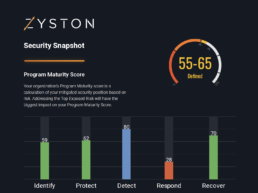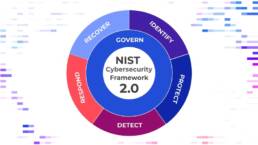Penetration testing, also known as pen testing, is a critical aspect of cybersecurity. It simulates real-world attacks on computer systems, networks, or applications to identify vulnerabilities that malicious hackers could exploit. Penetration testing is an essential practice for organizations of all sizes. It helps them proactively identify and address security risks before cybercriminals can exploit them.
In this blog, we’ll explore penetration testing and its importance in safeguarding your digital assets. We’ll cover what a licensed penetration tester is, how it works, its benefits, and the different types of pen testing.
How Does Penetration Testing Work?
 Penetration testing works by emulating real-world cyberattacks to identify vulnerabilities, assess risks, and provide recommendations for mitigation. It is crucial to highlight that penetration testing differs from vulnerability assessment, another indispensable tool in strengthening cybersecurity. Vulnerability scans identify weaknesses, while penetration testing simulates real attacks and reveals potential damage and exposure.
Penetration testing works by emulating real-world cyberattacks to identify vulnerabilities, assess risks, and provide recommendations for mitigation. It is crucial to highlight that penetration testing differs from vulnerability assessment, another indispensable tool in strengthening cybersecurity. Vulnerability scans identify weaknesses, while penetration testing simulates real attacks and reveals potential damage and exposure.
Penetration testing involves a structured approach that includes the following:
1. Planning.
Define the scope of the test, objectives, and rules of engagement. This stage also involves gathering information about the target, such as operating systems, applications, and potential vulnerabilities.
2. Scanning and Reconnaissance.
The penetration tester identifies potential entry points, vulnerabilities, and weaknesses within the target environment. This phase might include network scanning, application testing, and information gathering.
3. Exploitation.
Here, the tester attempts to exploit the identified vulnerabilities to gain unauthorized access or control over the target system. This step helps assess the effectiveness of existing security controls.
4. Post-Exploitation.
After successful exploitation, the tester assesses the extent of the breach, potential damage, and the ability to maintain access. This phase also helps uncover any lateral movement within the network.
5. Reporting.
Pen testers provide the client with a detailed report. It outlines the vulnerabilities discovered, the associated risks, and recommendations for mitigation. This report serves as a roadmap for improving the organization’s security posture.
The cost of penetration testing varies depending on the size and complexity of the tested system or network. However, it is a worthwhile investment, as it can help organizations avoid costly data breaches and other security incidents.
Benefits of Penetration Testing in Cybersecurity
 Penetration testing offers numerous benefits for organizations aiming to bolster their cybersecurity measures:
Penetration testing offers numerous benefits for organizations aiming to bolster their cybersecurity measures:
- Identifying Vulnerabilities: Penetration testing helps uncover hidden and exploitable vulnerabilities that may not be apparent through routine security assessments.
- Risk Assessment: It provides a realistic understanding of the potential impact of security vulnerabilities on an organization’s operations and data.
- Compliance: Many regulatory standards and industry-specific mandates require penetration testing as a security best practice.
- Mitigation Recommendations: Penetration testing reports provide actionable recommendations for improving security, prioritizing weaknesses, and allocating resources effectively.
- Real-World Simulation: Pen testing mimics real attacks, providing insights into an organization’s response to cyber threats and enabling incident response improvements.
- Reputation Protection: Identifying and mitigating vulnerabilities proactively helps prevent data breaches and reputational damage.
What Are the Different Types of Penetration Testing?
 Penetration testing is not a one-size-fits-all approach. Various types of penetration testing address specific security concerns. Let’s explore some of the most common testing techniques:
Penetration testing is not a one-size-fits-all approach. Various types of penetration testing address specific security concerns. Let’s explore some of the most common testing techniques:
1. Open-Box Penetration Testing
Also called “white-box” testing, this approach promotes transparency between the penetration tester and the client. Testers receive detailed information about the assessed systems and applications, such as source code, network diagrams, and configurations. Open-box testing enables focused evaluation of specific areas and provides a comprehensive understanding of the environment. This type of testing is highly effective for in-depth assessments.
2. Closed-Box Penetration Testing
Unlike open-box testing, closed-box or “black-box” testing offers minimal information to the tester. Testers have limited prior knowledge of the assessed systems, simulating the perspective of an external attacker. This testing helps organizations assess their security posture from an outsider’s perspective, even with limited information about the target.
3. Internal Penetration Testing
Internal penetration testing assesses the security of an organization’s internal network, systems, and applications. Testers have user-level access and aim to identify vulnerabilities exploitable by internal actors, like employees. This testing is crucial for protecting sensitive data and critical systems.
4. External Penetration Testing
External penetration testing focuses on vulnerabilities external actors can exploit to breach an organization’s network. This testing assesses the effectiveness of external security measures such as firewalls, intrusion detection systems, and web applications. Identifying weaknesses in this context helps organizations protect their digital perimeter.
5. Covert Penetration Testing
Covert penetration testing, known as “stealth” testing, assesses an organization’s detection and response capabilities without the IT staff’s knowledge. It involves simulating advanced cyber threats to assess the organization’s readiness to detect and respond to them.
Keep Your Business Secure; Partner with a Reliable Penetration Testing Service Provider
Penetration testing is a vital tool for identifying and addressing potential vulnerabilities in an organization’s security posture. As cyber threats evolve, regular penetration testing can help organizations stay ahead of attackers and protect their assets. Partnering with a reliable cybersecurity company ensures high-quality assessments and actionable recommendations tailored to your needs.
Zyston is a full-service managed security service provider offering expert penetration testing services to help organizations safeguard their digital assets. Our licensed penetration testers have the knowledge and skills to deliver comprehensive assessments and actionable recommendations. Don’t wait until a cyber threat compromises your organization’s integrity; invest in penetration testing and fortify your cybersecurity defenses today. Contact us to learn more about how we can help protect your digital assets.

CyberCast Security Reporting
Security reporting that speaks business
Zyston CyberCAST brings the world of cybersecurity metrics up out of the weeds and into the hands of executive decision makers so nothing gets lost in translation. With CyberCAST, your organization gets clear visibility on security risks and also how your organization scores against your industry peers.





















